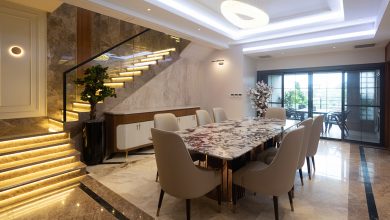In the quiet town of Kanaikhali, within the Natore Sadar of northern Bangladesh, stands a home that feels deeply rooted in story and soil. Named Ayna Burir Adar—meaning “the jungle of the old woman Ayna”—this residence designed by Sharal Architects, led by Md. Mainul Islam and Anindita Laz Banti, carries forward a local legend while redefining contemporary living in rural Bangladesh. The home is both an architectural gesture of remembrance and an exploration of how built form can converse with landscape, light, and lineage.
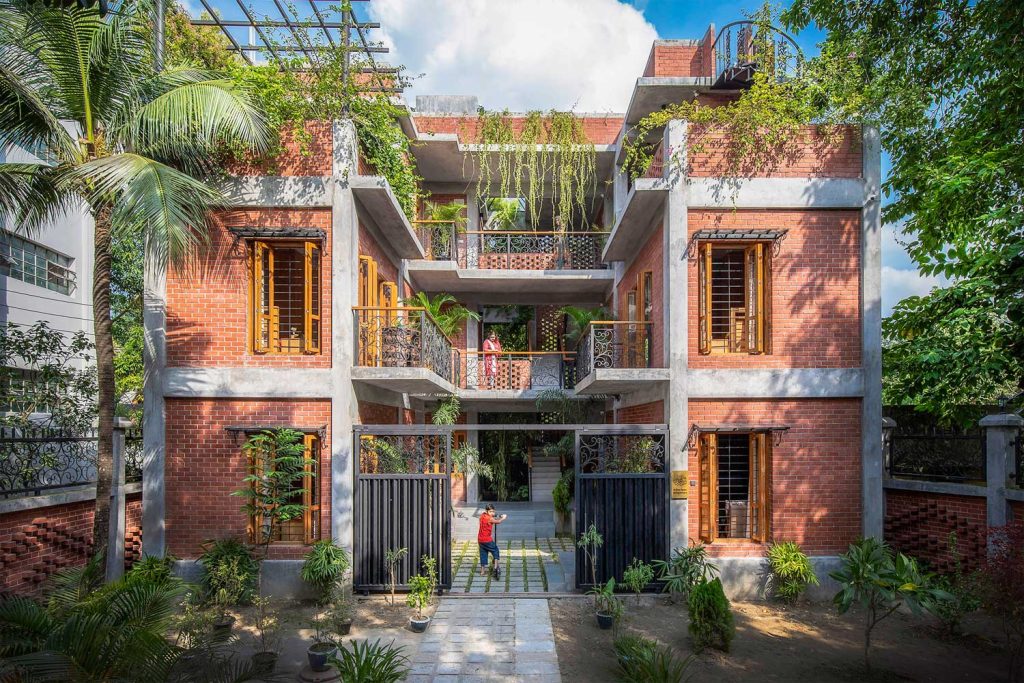
The story begins in the mid-19th century, when the site was nothing more than an overgrown jungle, feared by locals for its wild animals. An old woman named Ayna dared to inhabit this wilderness, lighting a lamp in the darkness and giving life to the myth that would one day lend this home its name. The residence—commissioned by Sohani Hossain for her elderly mother and extended family—sits on a modest 2.7 katha (185 m²) plot overlooking the open fields of Kanaikhali to the west. What once was an untamed terrain now becomes a vessel for memory, community, and continuity.
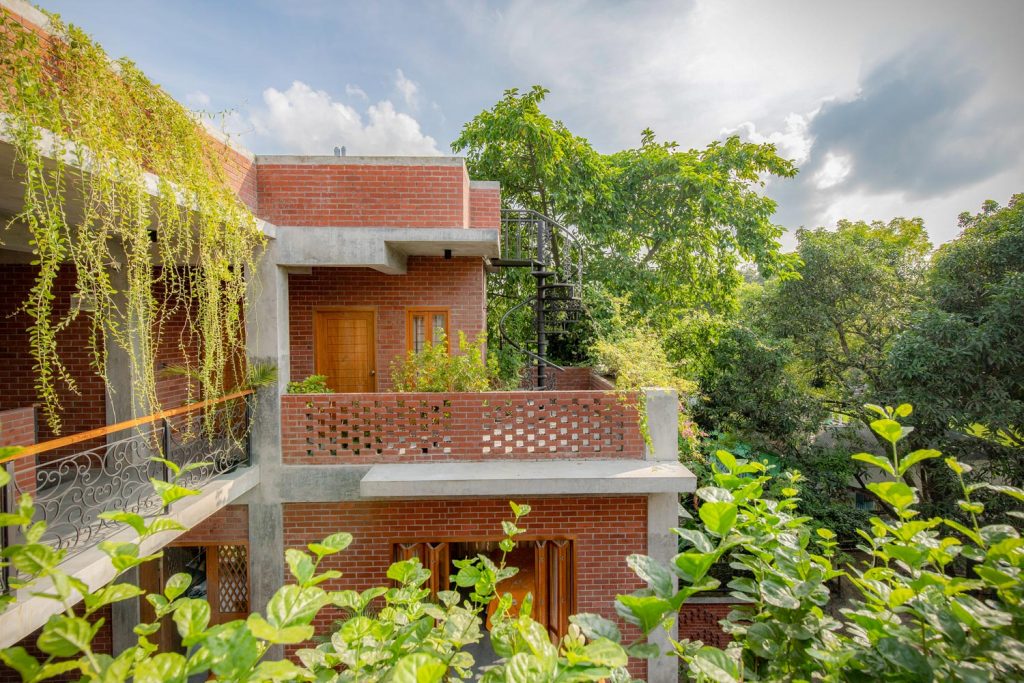
For the architects, this origin story shaped everything that followed. “We wanted the house to feel as though it emerged from the ground, not as an imposition,” explains the team. This sentiment manifests in the home’s earthy palette, its organic textures, and the way each architectural gesture acknowledges the natural and historical identity of the site.
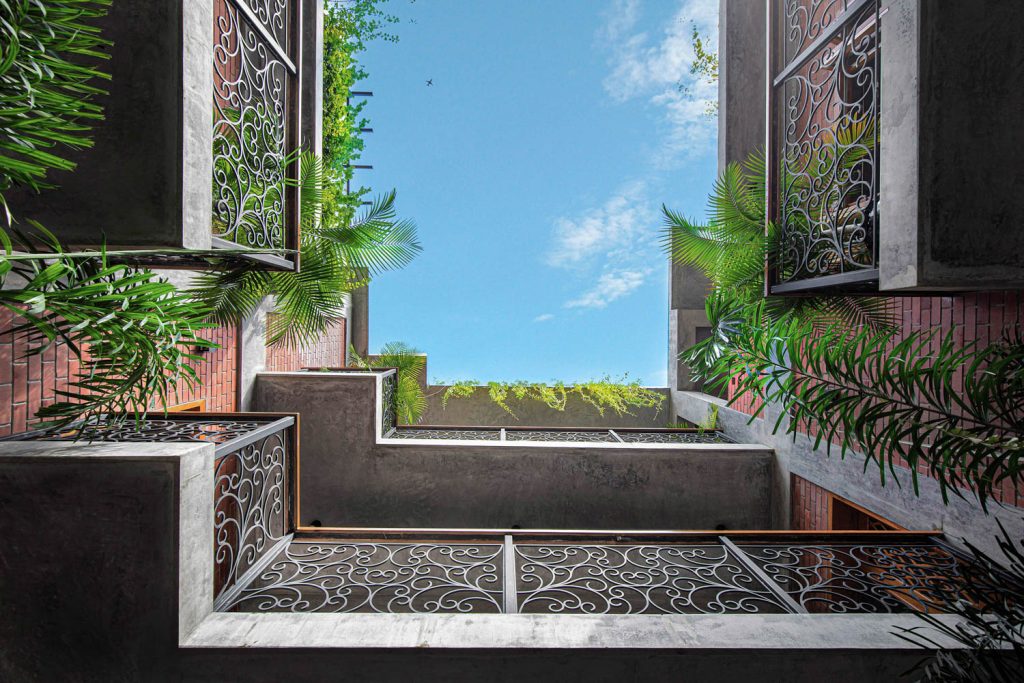
The project replaces an old family home with a three-storey, 3400-square-foot residence that maintains an unbroken relationship with the ground—honoring the client’s wish to preserve the spirit of the original dwelling. It contains six bedrooms with attached washrooms, generous living and dining spaces, a kitchen, storeroom, study room, and terraces. Yet, despite its scale, the design remains intimate, offering quiet corners for reflection and open spaces for family gatherings.
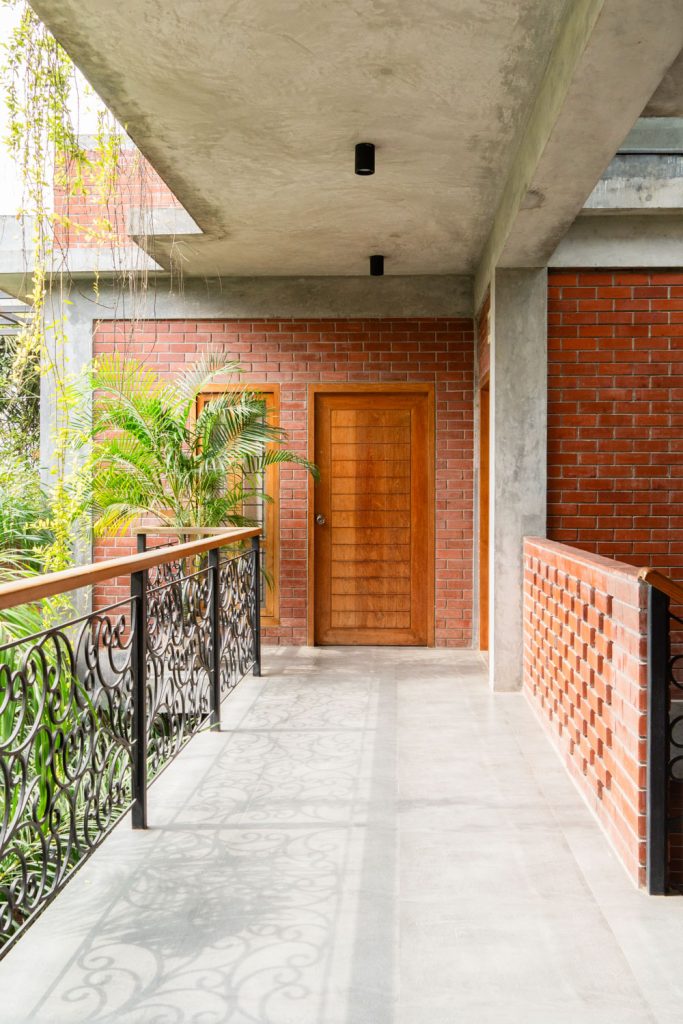
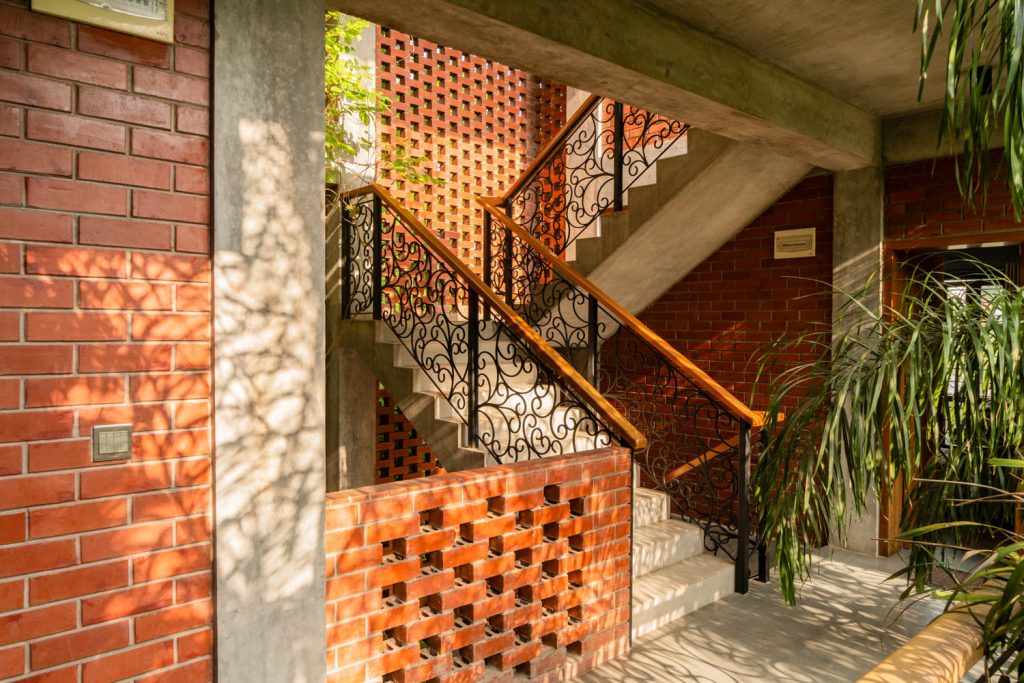
The design process, which spanned from December 2018 to April 2019, culminated in a careful construction journey that reached completion in January 2022—an endeavor that balances craftsmanship and cost, realized at around 9 million taka, including interiors and furnishings.
At Ayna Burir Adar, materials tell the story as vividly as the walls themselves. The architects chose exposed brick, concrete, wood, glass, and mild steel, combining tactile honesty with structural clarity. Brick, in particular, plays a dual role: it evokes the rural vernacular while symbolizing the dialogue between nature and construction. Concrete acts as a unifying frame, grounding the textures in balance.
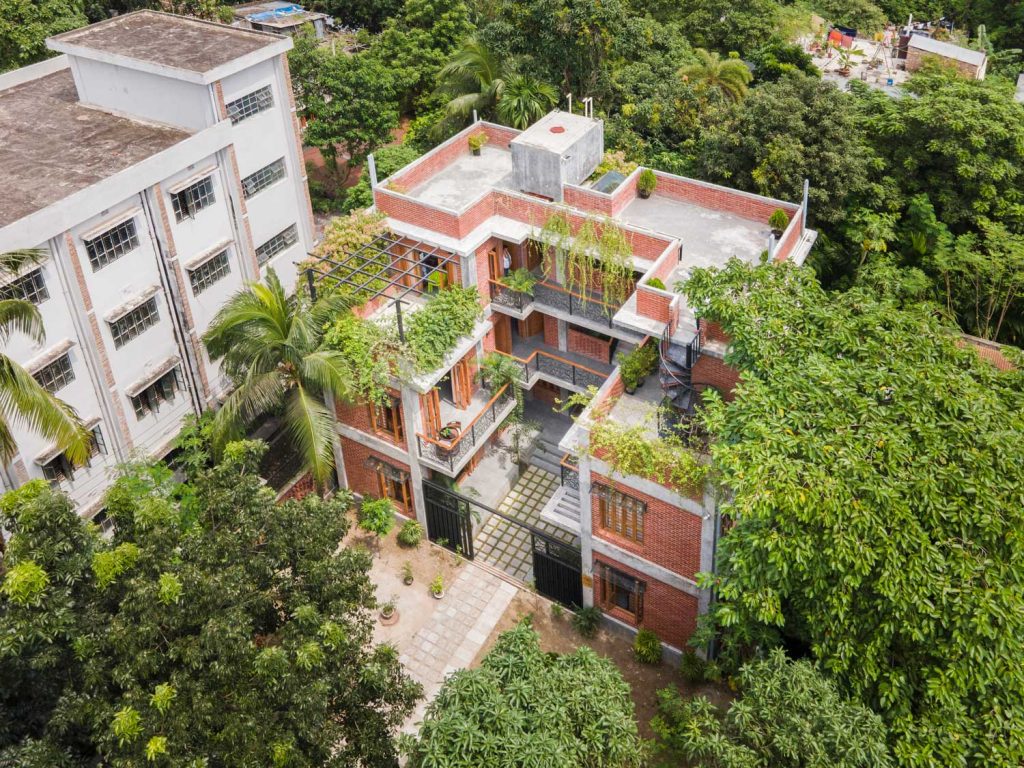
“The color and texture were chosen to complement the landscape, not dominate it,” says Ar. Anindita Laz Banti. “We wanted the building to blend into the earth, to feel embraced by it.” Indeed, the facade’s earthen tones, punctuated by the rhythmic play of brick-jali and shadow, dissolve gently into the surrounding greenery. A cluster of existing bamboo trees beside the main staircase inspired one of the design’s most evocative gestures—a stairway that spirals upward in conversation with the vertical rhythm of bamboo stalks, connecting levels while blurring the boundary between indoors and out.
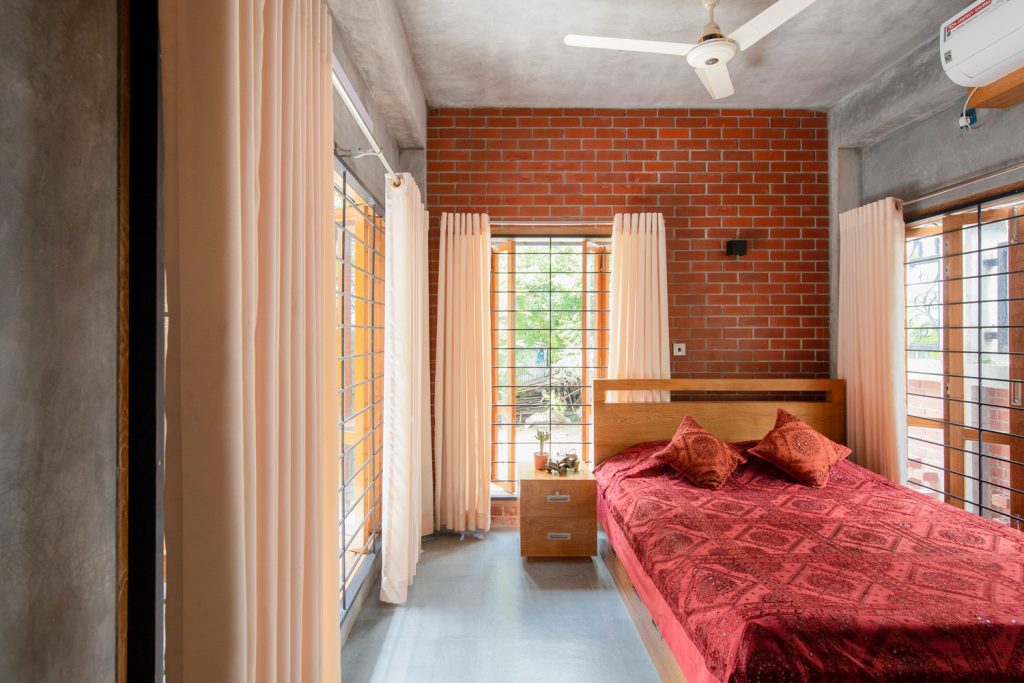
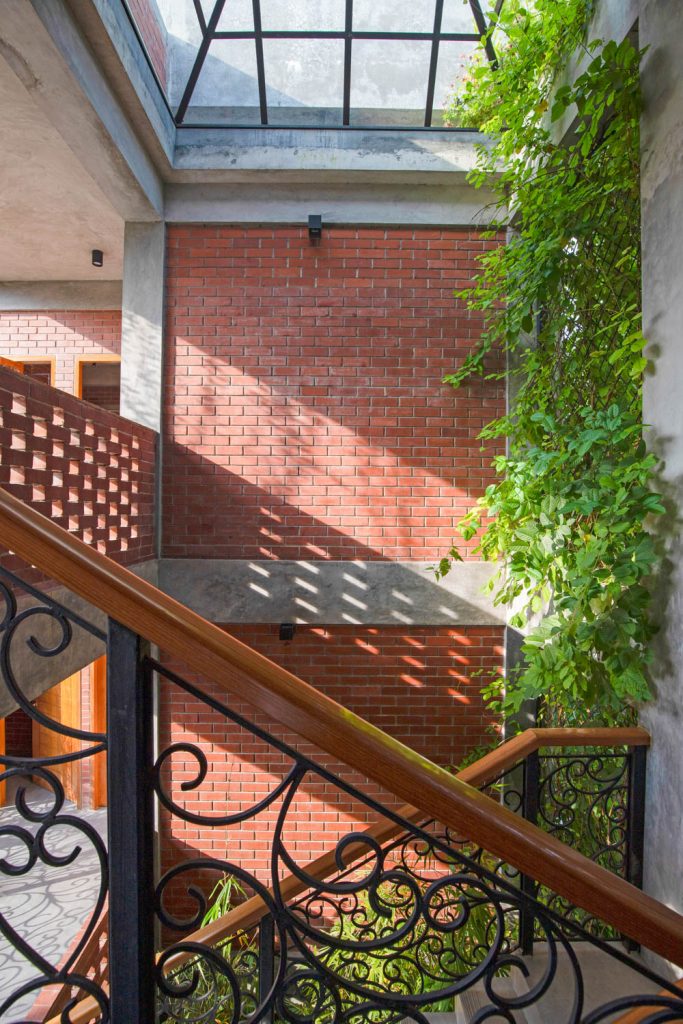
The residence’s plan revolves around a central courtyard, which forms the spatial and emotional core of the design. Two east-west-aligned living blocks frame this open void, allowing natural light and cross-ventilation to penetrate deep into the building. Balconies, corridors, and internal circulation paths all converge toward this central court, establishing visual connectivity between spaces and ensuring that no room feels isolated from nature.
This void also functions as a climatic buffer, moderating temperature and airflow. The west-facing walls—where harsh sunlight can be a challenge—are built with 12-inch-thick masonry and punctuated by smaller openings to reduce heat gain, while larger operable windows on the opposite sides allow air to flow freely. This thoughtful environmental strategy, both simple and effective, reflects an architectural intelligence rooted in context rather than technology.
Every element in Ayna Burir Adar is designed to capture the poetic movement of light. The brick-jali screens, the pergolas casting patterned shadows, and the terrace gardens that open the sky into the house—all work together to animate the interiors across the day. Morning sunlight filters through brick lattices, dappling the floors in warm, shifting tones. By afternoon, the bamboo beside the stair casts moving silhouettes across concrete walls, evoking a quiet dance of shade and light.

The architects also introduce subtle spatial compressions and releases—narrow passages that lead to airy terraces, low ceilings that open into double-height volumes—creating an experience that is both intimate and expansive. Each gesture seems to breathe, reinforcing the idea that architecture here is not static enclosure but a living framework for air, sound, and emotion.

Beyond its environmental role, the courtyard serves as a social and symbolic heart. It connects the family across generations and levels—children playing downstairs, elders watching from the balconies, and the mother, for whom the house was built, sitting by the garden, always within earshot of laughter and conversation. The design encourages these subtle interconnections, turning architecture into a medium of belonging.

The terrace gardens, created by carving away mass from the second floor, extend this concept vertically. They provide quiet retreats that overlook the surrounding greenery and Kanaikhali field, blurring the threshold between enclosure and openness. Nature becomes not a backdrop but an active participant in the architecture—a presence that breathes through every wall, stair, and window.
Attention to craftsmanship defines every corner of Ayna Burir Adar. From the pointed brick walls that display the tactile precision of local masons, to the spiral staircase that ascends like a sculptural ribbon of steel and shadow, the residence celebrates the hands that built it. The design’s honesty lies in its details: unplastered surfaces that reveal structure, joinery that showcases material meeting points, and furniture that complements the architectural rhythm rather than competing with it.
Ultimately, Ayna Burir Adar is less a house and more a reflection—a mirror to its name. It mirrors the courage of the woman who once lit a lamp in the wilderness, the love of a daughter rebuilding her mother’s home, and the architects’ belief that architecture can be a bridge between past and present, between the tangible and the remembered.
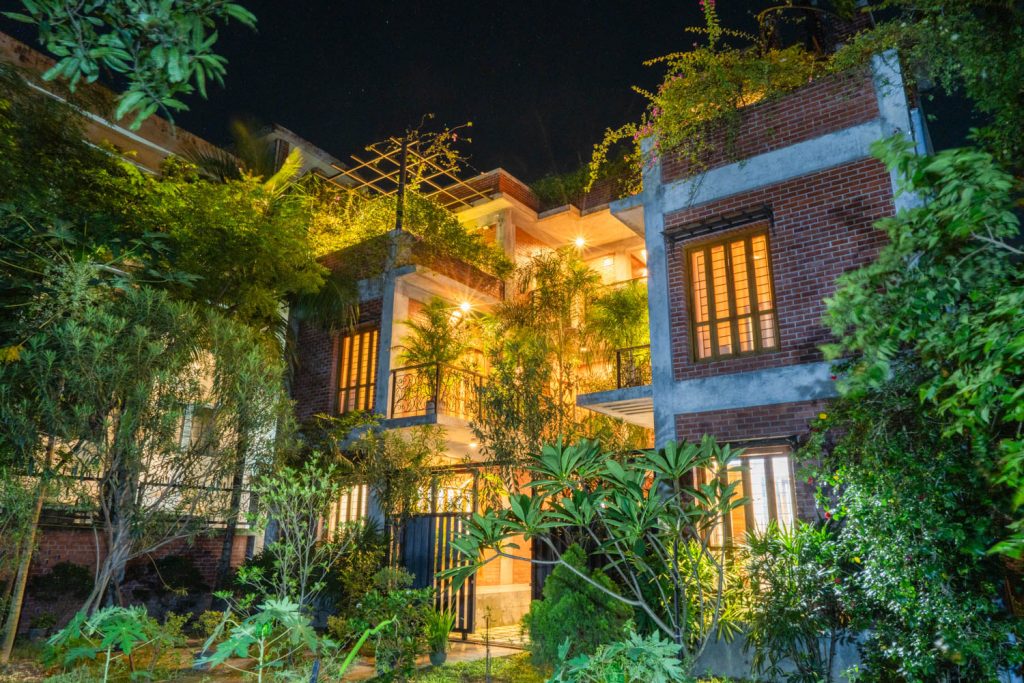
In its modesty lies its power. This is not a house that shouts; it hums—a soft melody of brick, light, and memory. By weaving together heritage, ecology, and emotion, Sharal Architects have created a home that embodies the essence of place and the poetry of human life within it.
Ayna Burir Adar stands today as a quiet testament to how thoughtful design can transform the ordinary into the extraordinary—where the walls remember, the air moves freely, and the old woman’s lamp still glows, softly, within.

